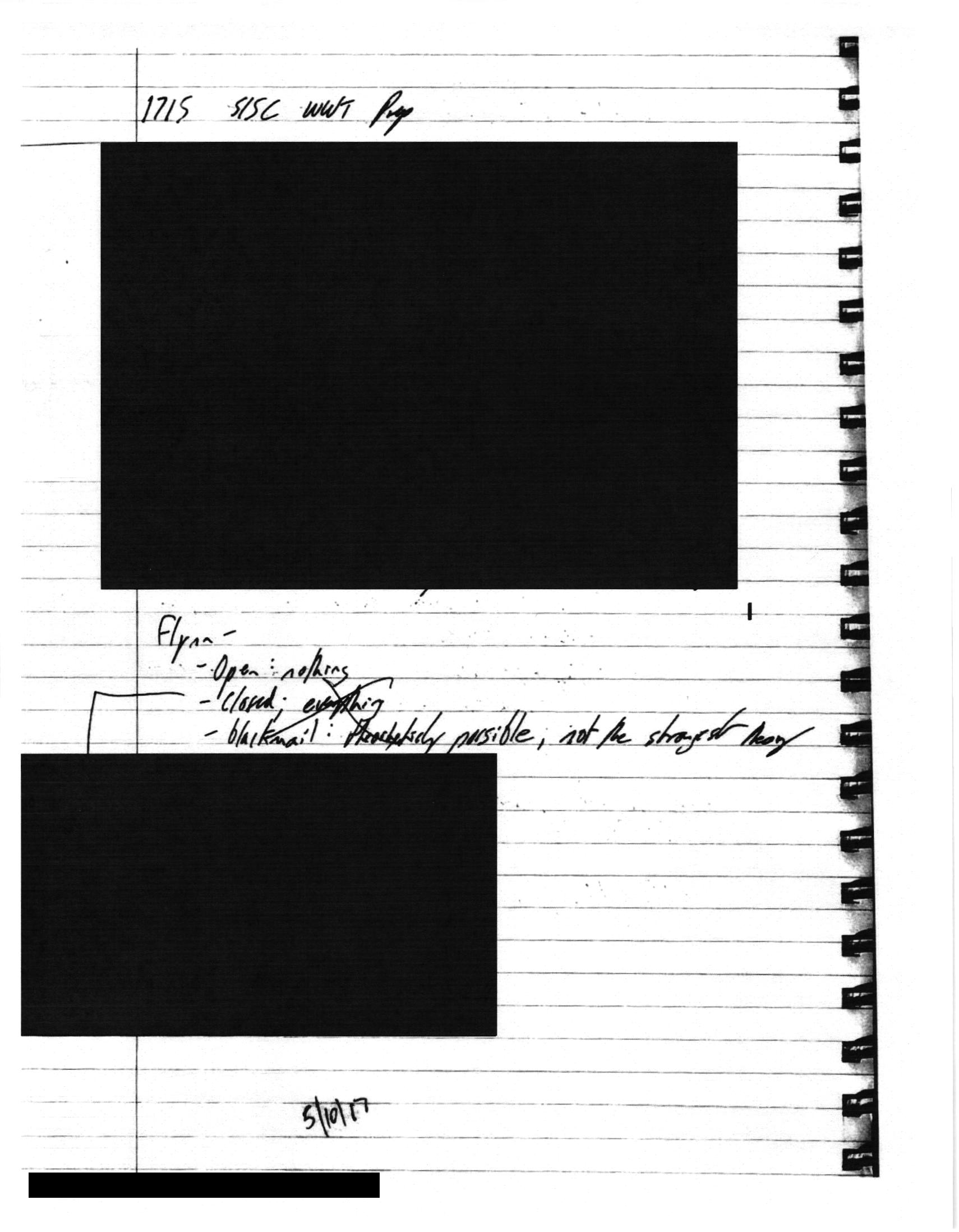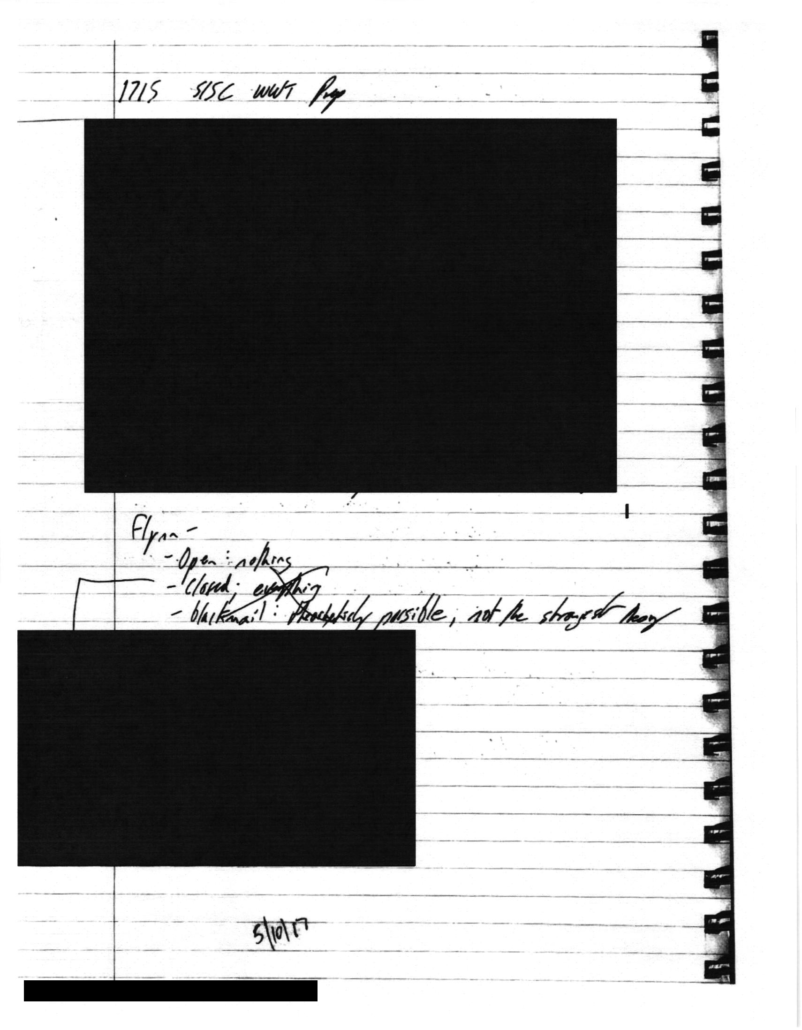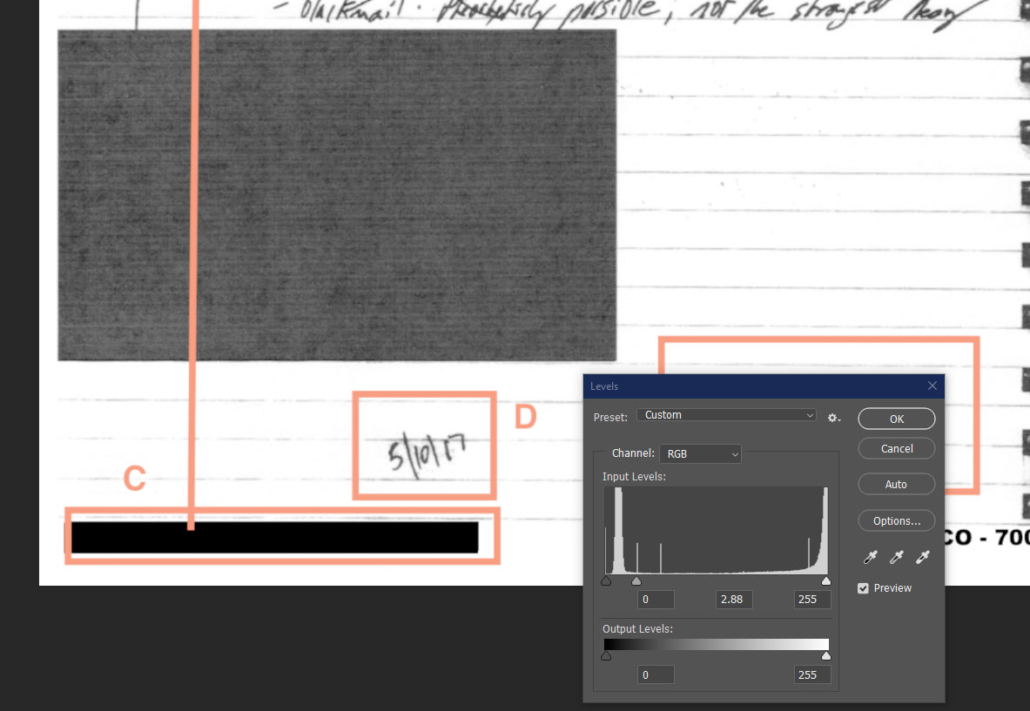More Reason to Question the Government’s Treatment of Andrew McCabe’s Notes
In this post, I noted that the three sets of Peter Strzok and Andrew McCabe notes to which FBI added dates (in at least one case, inaccurate dates) had had their Protective Order footers redacted, suggesting someone packaged them up for circulation (probably with two other documents shared that same day, one of which was a frivolous repackaging of Strzok’s texts with Lisa Page).
In this post, I pointed out several other irregularities with McCabe’s notes: that there’s an artifact in the left margin by one of the redactions (multiple people have said this is one or two post-it notes which left a shadow and covered up the margin) and there’s no declassification stamp.
Two more readers of the site have provided further reason to question FBI’s treatment of Andrew McCabe’s notes.
First, a tech expert separated out the objects in the PDF with the altered date, which shows what the original scan of McCabe’s notes looks like. It looks like this:
That is, the redaction that covered up where the footer would say, “SUBJECT TO PROTECTIVE ORDER,” was in the first scan of the document, even though the footer would be applied later (the Bates stamp and the Protective Order footer show up as metadata in the PDF).
Meanwhile, Cannonfire did some more toying with the document in PhotoShop, and shows that the Bates stamp footer and the redaction are of a different quality than everything else on the page.
It makes sense that the Bates stamp footer is–those are added at a later stage to the document along with the Protective Order stamp.
But for this document to have been produced in this way, the Protective Order stamp would have had to have been redacted out at a later date.
Both of those details suggest that the footer was redacted at a later date.






EW I knew your obsession with timelines would tease out multiple iterations of the McCabe & Strozk docs. So now on McCabes notes 2 modification events? (& 3 iterations?)
I think so. The person who did the PDF analysis is working on that.
Normally, it appears that FBI does a scan, gives it to DOJ, which adds the Bates number and the protection order footer. But here, the footer was redacted. Then realtering the notes gets crazier still.
This is a really great catch. Hopefully there are some consequences for redacting information that is supposedly there to prevent dissemination of documents to those not entitled to see them. Seems like whoever was involved here in those redactions was not privy to exactly how these documents—the metadata portions—are actually handled (…or, if they were aware, possibly did not have required access/technical know-how to change the metadata, for whatever reason, without leaving another (possibly bigger?) footprint).
The administration’s methods…are they unsound?
https://youtu.be/03JXTuFGYWE
The hole they’re digging for themselves just keeps getting deeper and deeper.
Unfortunately, some litigants do cheat. But most are careful enough to do that only when they have exclusive control over the paper they’re filing. That way, they don’t have to worry about the genuine paper surfacing later.
In this case, they submitted doctored stuff, even when the un-doctored documents still existed and plenty of people could tell there was tampering. I’m not sure if that was just idiocy or some brazen belief that they could get away with it. Either way, it’s pretty astounding.
This proves the old maxim that it’s easy to tell a lie, but it’s not easy to tell just one lie.
I’ve seen lies described as a time-loop trap: you tell one, and you end up having to tell others to keep the first one from being revealed as a lie.
What would be odd though is if no one was brave enough to come forward to actually correct the record with the court. The originators of the document have tried to come forward but it seems that DOJ is arguing that the originators don’t have standing… Curiouser and curiouser… since DOJ then claimed that these documents had been authenticated by the same folks that they seek to prevent from giving an opinion to the court… methinks that Sullivan will be unleashing fireworks very soon now.
redaction placed first
underlying unredacted footer text placed subsequently
? am i reading this right ? … cuz … nutso.plenty.
“… the redaction … was in the first scan of the document,
even though the footer would be applied later”
(cannonfire was an original explainer for me of the dossier and its many tributaries.)
“Oh, what a tangled
web we weave,
When first we practice
to deceive”
Sir Walter Scott, Marmion, 1808
Hope Sullivan takes his time, orders more production and further exposes the depth and breadth of DOJ’s corruption. The appellate directive to move things along doesn’t compel him to overlook prosecutorial misconduct, nor constrain him from exploring it to his own satisfaction before any further rulings.
A slow, very fine grinding of justice here is just the proper course. As is the fine grinding of Marcy Wheeler’s mind, for which all loyal citizens owe a debt of gratitude. Having done my share of complex records sleuthing, I am in awe.